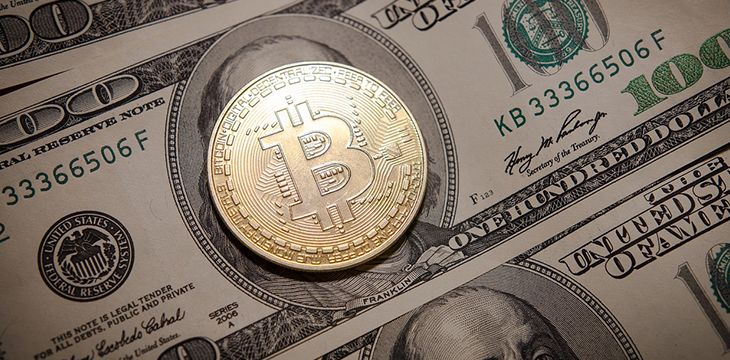|
Getting your Trinity Audio player ready...
|
The post originally appeared on Medium, titled “What is Money?,” and we republished with permission from its author, John Pitts.
The majority of people don’t know what money is, and very smart programmers can just as easily be in that camp. However, if you know what money is, you can master Bitcoin much faster than legions of folks who have far more technical knowledge than you.
So let’s hand you that advantage as succinctly as we can, but first let’s give you what money is NOT: The vast majority of modern peoples will tell you money is based on faith—a collective agreement amongst sharing folks to value something which has no value otherwise. They will tell you the U.S. dollar since the early 1970s (see: Nixon) has no asset backing it—thus is proof that money is faith-based.
WRONG.
A costly wrong. People who think money is based on faith, are doomed to eventually lose all their cash wealth. You won’t, because you’re here reading this and will know better…
Moneta: [Latin], plural monetas [1: see references at bottom]
- Coin
- a place where coins are made; a MINT
- a special name for the goddess Juno. The Romans made coins at the temple of Juno Moneta, whose structure took on the abbreviated name “Moneta”—which became synonymous with Roman coinage
This is the best most-efficient definition you will ever read for money. Money is/was coins—universally-valued metal-asset objects stamped, and thus authenticated, by a trusted entity. Money’s etymological forefather, “monetas”, is also quite simply a mint—the trusted entity.
So is money a prized-metal coin, or is it a building that makes/stamps those coins?? It’s BOTH!
Bitcoin is no different. Bitcoins are shares of ownership for the right to use the network of equipment which processes computational transactions. Before stating specifically how money is both coins and mint, let’s tell a Great American Story to help you understand:
Wampumpeag: [Algonquaian Native American], shortened “wampum” [2]
- a string of highly processed (white & purple-blue) seashell beads used as money by Native Americans.
etymology: said to be compounded from wab- “white” + -ompe- “string” + “plural” suffix -ag
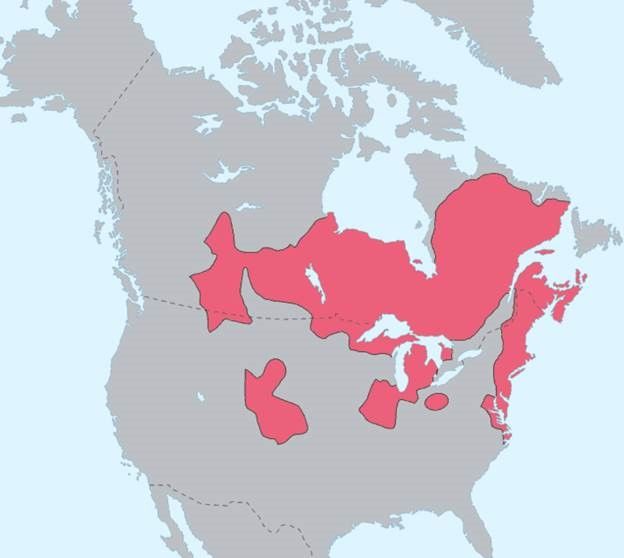
The colonists back then did not have printed currency, so their trade economy was mostly based on the barter of commodities such as corn and pelts. When wampum became a prime commodity in the Northeast corner of North America in 1630, it forever altered the Native systems of reciprocity and balance in life, labor and trade.
For 30 long years, wampum was the most common money in Colonial America, which centered on the Plymouth Colony in New England. The teachers in America always used to say Manhattan was bought by Dutch settlers for $24 in beads—and it’s probably true.
That story typically is told as if the Native Americans were foolhardy to have made such a trade, thus “tricked” by the conniving white man. But Manhattan was a barren island back then and wampum was quite valuable—to both the Native Americans who sold the island but to the colonists who bought it as well.
It was more likely an even exchange. But WHY did white colonists from Europe use shell beads amongst even themselves—they surely weren’t “tricking” their own European-gold-minded fellow traders?
Gold-backed money preceded wampum money in New England, and it replaced it too. So how the hell did wampum ever become the primary money of colonial America for 3 entire decades? Enter PROOF OF WORK, an asset.

Every commodity is a “proof of work”. Gold is shiny and rare, but rare doesn’t mean proof of work. Proof of work means that a thing demonstrates & pronounces human effort. Gold is valuable not just because it looks good (so does pyrite), but because a chunk of it represents a LOT of hard work and processing by human ingenuity.
Gold, the element, is everywhere, it’s in every creek bed across the world waiting for you to pan it out. Good luck! Panning for gold requires hard back-breaking work, so for every ounce you produce, it represents a great feat of WORK.
Others recognize this difficulty, and pay gold miners for the highly-processed result. So gold wasn’t money for 3,000 years simply because it was pretty jewelry or rare. The element “Au” was money because in aggregate it’s VERY expensive to produce it in large enough quantities to display—a coin, a necklace, a pair of earrings.
A wedding band represents a spouse has received a great gift of EFFORT—a proof of work from her mate. Humans TRIED to make gold a cheaper proof of work; the entire field of Alchemy is based upon those attempts. But Alchemy failed because the element is best produced by fusion inside planets and suns—fusion requiring technological prowess humans have yet to display (stay tuned, humans may yet succeed in alchemy but that’s a topic for a future article).
Humans have used gold as money for 3,000 years—the same amount of time humans have processed pyrite into sulfur—so even the ancients understood that gold was a denser proof of work than pyrite). [4: history on pyrite]
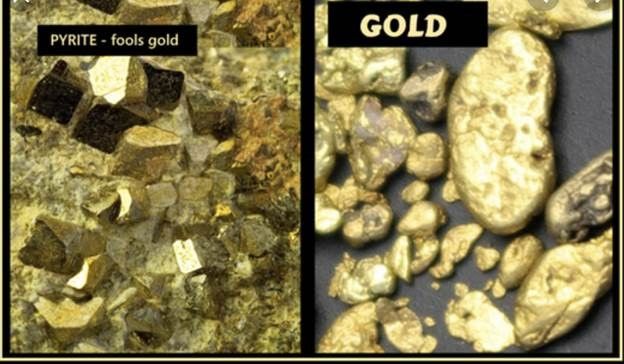
Gold is not the only proof of work, there’s oil, coal, iron ore and even sand (depending on where you live and your use for it) as well as dirt and manure! Gold has been de facto money because it’s traditionally the most EFFICIENT proof of work.
Gold is a super dense heavy element, it’s parsed somewhat easily (hence the smallest unit of measurement for gold is “grains”), and it can be transported easily, if not proudly (as jewelry!) and is cheap to store.
To understand why gold has won every money-battle for 3,000 years, including that against wampum in 17th century America, try to carry around the equivalent dollar value of $40,000 in gold vs $40,000 in cows or coal. $40,000 in gold is about 2 dozen 1 ounce coins; whereas, $40,000 in cattle requires a large plot of land and EATS into your nest egg to keep them alive! Cows are also not easily divisible (not alive anyway!).
Also, at home try to mine an ounce of gold by panning for it in your local creek, and then try to make some calves from a bull and cow. It’s guaranteed calving cattle is FAR easier than panning for gold.
Gold is a much higher form of “proof of work”, it’s divisible and cheap to store unlike, say, electricity or oil. Gold is SO efficient as money that things like wampum have only been money for short periods of time when gold was scarce within a community—like 1600s America. Back to wampum’s story…
Colonials accepted wampum because gold was scarce. The colonial gold supply in America was quickly used-up to buy quality manufactured goods from Europe, it was in severe shortage. Colonists needed cheap manufactured goods from England and Europe and traded American gold over to Europe to get those supplies while they were producing no finished goods for export.
The gold was in a severe out-flow condition. Thus a gold shortage opened up a vacuum for another money to take its place, temporarily, for inter-American trade: Enter wampum.
But wampum is just seashells right? As common as anything in Colonial America and EASY to find! Where’s the proof of work in wampum? Wampum wasn’t a shell grabbed from the local New Jersey or Carolina beaches, wampum was SHINY BEADS. Now that you’ve calved a few cows, and panned for some gold in your neighborhood’s local creek and thus are an expert on Proofs of Work—go ahead and grab a clam shell (note the oft-used “clams” colloquialism for money) and start polishing!
First chip it down to a small cylinder using tools a Native American would use (rocks), then round it off for a few hours, and then polish the outside so it gleans. But wait, if you’re still not frustrated, now for the hard part—drill a hole all the way THRU that tiny little sucker! Good Luck! You might as well get your pans out and get some of that shiny speckled wet yellow creek-dust before undertaking wampum with primitive tools.
Guess what? The colonials SURELY made wampum too—for all three decades. Seems like a great task to give a 12-year-old—“go take these shells and MAKE the family some money, son—literally.”
Were 1600s colonists just as nuts as the Manhattan natives to accept beads as money? No. Colonists easily recognized that making a necklace of white and blue-purple wampum was HARD (PROOF OF) WORK.
Wampum’s end came because of the manufacturing ingenuity of the Europeans combined with the colonists beginning to process exportable finished goods like New England’s rum. Arbitrageurs recognizing these beads could probably be mass-produced using modern 17th century manufacturing technology, travelled across the ocean and posed their interesting arbitrage-trade to manufacturers as RFPs & RFQs (request for proposal, request for quotes).
Those requests were answered in the form of cheap beads from a “printing press”- like manufacturing process. As soon as enough bead-creating plants churned out those beads & were shipped to American natives, the price of shiny shell beads rapidly declined, and thus wampum “density” declined.
After three decades, colonists needed too many wampum beads per cattle to make it economical as money. Remember those stories of 1920s Germans carrying wheelbarrows of Weimar cash to buy a loaf of bread?
That was easy compared to how heavy a wheelbarrow of beads was to get to market as wampum was out-competed in the end. As gold began to be obtained from early American exports like rum and oak ships, wampum’s days were officially over after a 30-year run.
What can we learn from wampum’s short stint as REAL money backed by the asset known as proof of work?
Anything can be money, maybe not the most EFFICIENT money, but as long as it’s backed by a proof of work that money will be valuable to the extent the work is valuable. Getting gold or wampum for your work efforts is a form of barter—a barter of equal-work goods. But what about the U.S. dollar and Bitcoin?
History is riddled with bad money that didn’t last. John Law printed money for his French king in the early 1700s; England printed “South Seas” shares; the Dutch traded paper tulip futures. PAPER is cranked out quickly, from presses. It’s not an effective proof of work.
The only reason paper can temporarily be money for long periods of time, is when it’s backed by an agreement of exchange for a real asset. Thus a long time ago in the 19th century humans began fractional reserve banking to maintain their money—a fancy way of creating money from an agreement between an authorized mint and citizens who agree to substitute paper money for gold (or sometimes silver when more plentiful).
But here’s the IMPORTANT history: any time a trusted CENTRALIZED authenticator of money stopped backing the paper money with gold—that money died. John Law’s cash, America’s Southern Civil War “Confederates”, Weimar Germany’s printed cash all expired worthless. The same fate will occur to the fiat currencies of Zimbabwe, Venezuela, Turkey, Russia and India. These are just modern examples of rapidly deteriorating cash values thanks to paper AND DIGITAL fiat money being backed ONLY by printing presses and digital money schemes.
National fiat currencies are worth less than wampum (even today, go buy a necklace from ETSY for your loved ones). Fiat is paper and electronic numeric exchangeable for NOTHING. THERE ARE NO EXCEPTIONS to the rule that money must be backed by an asset or die.
What you know as fiat currencies are the provable manifestation of declining “faith”. Faith like brand names are only as good as the collateral. Brands get their goodwill typically from quality—the quality of their goods. Fiats got their goodwill from the past—the promised gold-specie-for-paper.
That promise was broken, and even the strongest world currency, the U.S. dollar, has suffered a 98% loss in the last half-century—and it’s not done until it’s zero. Faith-based currency is a Ponzi scheme—the very definition of one.
Ponzi schemes rely on faith and finding more suckers to “believe”. Money isn’t a belief, religion, or faith; money is an asset PERIOD
Money is ALWAYS a commodity, an asset, a proof of work
THIS is where owners of btc (a forked airdrop of Bitcoin’s original protocol) and first-and-second world governments have misled you. Let’s take a look at why many very smart coders and technically-brilliant people will try to tell you that btc (bitcoin’s bad twin), the U.S. dollar, the Swissie, the Brit pound, the euro, the yen and all the dollar-pegged fiat currencies are money:
Paper Money
“It had been justly stated by a British writer that the power to make a small piece of paper, not worth one cent, by the inscribing of a few names, to be worth a thousand dollars, was a power too high to be entrusted to the hands of mortal man.” [John C. Calhoun, speech, U.S. Senate, Dec. 29, 1841]
Brands command a goodwill value, but that goodwill fades much faster than the time to establish it. Facebook took over a decade to become a loved service, and then thru a series of very poor management decisions by Zuckerberg the brand took a nasty hit in the span of just months via Cambridge Analytica.
The scandal was just the tip of the iceberg of bad things Facebook has done with user information as well as their product quality. That story isn’t over yet, but Blockbuster’s is. Blockbuster took decades to become the “gold standard” for people watching movies. But by missing how consumers wanted to consume movies in an easier fashion, first DVD mailers and then streamed video, Blockbuster rapidly lost all of its goodwill and went bankrupt.
The U.S. dollar and all national currencies are no different than Facedbook and Blockbuster; the goodwill is being lost much quicker than it took to gain it. You can almost use math on this. The “dolare” from 17th century which replaced wampum, and became dollars in 1795 officially, didn’t have its exchange for gold destroyed until the 1970s—a 300-year run in the U.S.
Yet in 50 short years the U.S. dollar has lost almost all of its purchasing power and now hangs like a thread as the government responds to any cold economic wind with another easing. That’s a roughly 6:1 ratio—a long time up, quick time down.
Perhaps the question to ask yourself now is, how long has YOUR favorite version of cryptocurrency or fiat (Hello Venezuela, btc, ETH…) built up its brand name? If it had one at all…
The U.S. dollar has its roots even before Alexander Hamilton’s creation of the official dollar in 1795. Dollar stems from the Spanish “dolare” which was the most common gold coin in 18th century America (> 100 years after wampum’s “run”).
The U.S. dollar was established as 1/20th of an ounce of gold right from the get go, and Hamilton had no choice but to promise his dollar notes would be backed dollar-for-fractional-ounce with gold specie.
Hamilton understood he could not create a currency which competed with the rogue Spanish dolares most everyone traded in the 18th century with something less. The U.S. dollar from 1795 thru the early 1930s remained pegged, $20 for 1 ounce at your local government mint.
You see, the paper dollar was backed by the U.S. Mint network, who acted like Bitcoin’s “miners,” AND ALL THE GOLD WHICH IS SUPPOSED TO BE KEPT SAFELY INSIDE AS COLLATERAL. Mints verified specie and dollar bills were “good”, and exchangeable for a proof of work. What dollar-bill owners held was a ticket to ride on the U.S. economy.
That mint system of goodwill and citizen trust took a big hit in the 1930s when a panicked U.S. government saw their revenues going rapidly down in the Depression and longed for easier money. So they made a step change from $20 per 1 ounce gold coin to $35, a massive dilution. That didn’t kill ALL of the dollar’s goodwill, however. It was Nixon’s “nixing” of the gold standard entirely in the early 1970s which sealed the fate of goodwill for the U.S. dollar. The purchasing value of the U.S. dollar since Nixon’s fateful decision has gone down more than 98% since then—AND COUNTING as the U.S. now runs quantitative-easing after quantitative easing.
Elected officials in the U.S. aren’t the only weaklings who can’t possibly even discuss going back to an asset-backed money—it’s EVERY national government. Today there are exactly ZERO asset-backed fiat currencies in the world. Luckily, there’s still money though…
Bitoin is a computation-backed money
Thomas Edison’s brilliant “electricity”, for which he invented the entire market out of seemingly nothing before it (sound familiar Craig Wright fans?), SHOULD have given gold its first challenge in thousands of years.
Electricity is weightless compared to gold, is very much divisible into any decimalized quantity, is invisible, and rapidly transportable. Electricity even gained a tradable market, as strange as that seems, over a 100 years later via Enron (no less!) and later Intercontinental Exchange (ICE which was acquired by the CME) when Enron torched their golden goose exchange via crazy over-levered internet investments.
But electricity has one big problem in its competition with gold—it’s expensive to transport and store cold. Electricity’s best storage devices are giant salt batteries, and transporting electricity in and out of batteries is expensive and suffers from much leakage.
Gold is as stable an element as they come (only Bismuth is more stable) and doesn’t leak when you store or move it. It doesn’t cost zero to store it or move it or mint it into coins, but compared to its value as money those costs are relatively small. Not so for electricity, thus like oil or coal before it (also relatively new human commodities), speeding electrons never really had a chance to compete with gold or fiat as money even though it was widely used by everyone. Enter the Ones & Zeroes!
BitCoin = a ticket to ride on the computation network
Imagine if all the early railroads created a limited number of tickets, 21 million let’s say, and said those tickets can be exchanged for moving people or goods across the land. You might go buy a ticket and ride, and that ticket would have resale value simply because others around you would recognize the ticket was backed by the proof of work which is the worldwide railway system.
The ticket wouldn’t be an act of faith, the railroad network is easily SEEN and tested by anyone. In fact, have you ever heard an oldster describe the beauty of the N.Y. Central main hub station in Manhattan?
It’s a crime they tore it down, and now Penn Station in Philadelphia is the one place you can go to see a fraction of what beauty Commodore Vanderbilt’s central station must have displayed. Like beautiful stone bank buildings in every town in the world, railway stations projected wealth and trust.
Their stations were like a peacock’s tail or a deer’s antlers, an unnecessary but fun advertisement that the rail network “tickets” were money-good, and they would deliver goods QUICKLY, SECURELY, and CHEAPLY vs other competitors.
Railroad bucks?
Railroads didn’t create a limited number of tickets, but perhaps they missed the opportunity to form a competitive paper money vs the U.S. dollar? Nope.
Tickets are easily forgeable, and rail executives would’ve understood this quite clearly, and preventing forgery “attacks” (sound familiar crypto-enthusiasts—double-spending…) would have proved VERY expensive. Plus, rail tickets would have just been an inferior competitor with a smaller base vs the already gold-backed U.S. dollar, British pound or Mexican peso. Thus no foolish competition was started. But isn’t the case DIFFERENT for tickets to ride on the great Bitcoin computation network?
It sure is.

BitCOIN = computation which happens to function beautifully as money
The U.S. dollar, or ANY fiat currency in the world today, is backed by nothing—other than the hot air coming out of elected officials’ mouths. Furthermore, Bitcoin is much more secure against counterfeiting than rail tickets. But Bitcoin allows you to do a similar thing as railroad tickets.
Bitcoin allows people to compute, to transact, and to store data. This is the secret of Bitcoin.
Bitcoin isn’t just a computer-nerd’s attempt to make a faith-based money. Crypto nerds will say “sure, cryptocurrency XYZ is not backed by anything but faith, but neither is the U.S. dollar and THAT’S money, right?” That’s what btc core, Blockstream “leadership” and many coders will tell you—coders, speculators and Ponzi scheme crypto promoters who don’t REALLY understand proof of work.
Bitcoin Satoshi Vision = A Proof of Work
Bitcoin, as Satoshi Nakamoto envisioned, is a massively scaled EXPENSIVE (like a system of mints) computer network built by mining companies selling “rides” at currently 1 satoshi per byte [5].
By exchanging your fiat currencies for Bitcoin (“BSV”) you’re pre-buying tickets to ride on what can amount to the world’s largest computer network which overtakes the internet the way railroads overtook horse-and-wagon trails.
Owning Bitcoin is owning a share of the world’s biggest supercomputer. The Bitcoin network IS the asset you own when you own Bitcoin. The network equipment itself, which allows you to compute on it, is the proof of work.
YOUR BITCOIN MONEY IS EXCHANGEABLE FOR AN ASSET—just like 20 1795 Hamilton U.S. dollars were exchangeable for 1 ounce of pure gold. Would you like to see the PROOF, that your Bitcoin is an asset which can be exchanged for work?
Take a ride on sym.re and enjoy an incredibly simple crisp URL shortener without the annoying obfuscating ads. Each “ride”, or shortened URL, will cost you less than a single U.S. penny in Bitcoin (SV).
Take a ride on Twetch and enjoy the lack of “bot-spam” and meaningless costless posts, and disguised ads. If you appreciate someone else’s post, you tip them a couple pennies. You don’t simply write a post, you INVEST in your post, a few pennies-worth of BSV.
You post with the expectation your post is valuable to someone else, who will tip you a thanks. You pay Bitcoin for the privilege of filtering your feed, each “follow” cost a few pennies-worth of Bitcoin.
Take a ride on BAEmail (“Before Anything Else”) and find out what it’s like to have a spamless inbox, or to pay to be heard, to bump the line of emails ahead of yours. Imagine a celebrity publicly posting their email address for all to see, but they won’t be able to READ your email unless you put a Bitcoin-value on the celebrity reading your prose.
Maybe you have a script you’d like a movie-producer to read? BAEmail allows you pay for the valuable attention you need to market your idea. Imagine the UTILITY of that service!
Your Bitcoin gains you those rights—those assets. You trust the Bitcoin network, the miners who have provided the massive supercomputing servers, to exchange your Bitcoin for ASSETS, for VALUE. Bitcoin is a Proof of Work!
These small-but-growing businesses reside on the “Metanet”, a cheaper, faster, and more secure version of the internet. Once you experience one of these apps and compare to the competition, using your imagination what they might be at scale, you will quickly begin to understand that Bitcoin is a ticket to ride on the modern supercomputer network known as Bitcoin.
There are roads and there are railroads, and we all understand railroads do the same thing as (dirt wagon) roads, only FASTER, MORE SECURE, and CHEAPER. When you hear “metanet” think maglev trains at 300 mph carting wine-sipping customers thru the Death Valley desert in comfort at pennies per mile; when you hear internet think “horse & buggies” making the daring treacherous passes over weeks and months (like a btc transaction?) thru mountains and deserts.
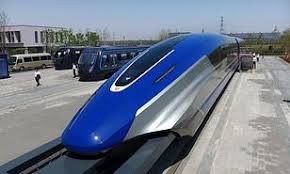
The Bitcoin network doesn’t threaten government fiat, Bitcoin is an asset class like the oil, electricity, and natural gas markets. You can no easier stop it than you can stop the proliferation of electricity after Thomas Edison showed it to us in the late 19th century.
Bitcoin doesn’t go away, Bitcoin is commoditized computation. If you put pressure on Bitcoin, like a balloon it will rise and prosper somewhere else.
You can ban innovation, but you cannot stop it because there will ALWAYS be a geography of people who will embrace it. While my own local chapters of the Pennsylvania Dutch “Amish” are an attractive-sounding oasis of a simpler time past and have some fantastic attributes, humans will ALWAYS swell past human restrictions of advancement—it’s in our nature.
For now, what’s important is that you begin to recognize that Bitcoin is the replacement for the internet, a collective informational rail network of human knowledge and economic transactions. You should begin to look past the negativity put forth by naysayers, competitors, evil government officials, and other mal-contents and recognize:
Money is Bitcoin
Bitcoin is Computation
Computation is Proof of Work
Proof of Work is Time
And Time, my friends, is Money
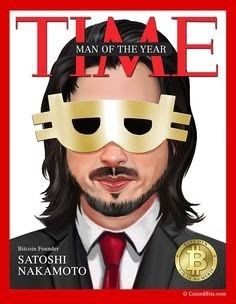
Doctorates Craig S. Wright never QUITE looked like this, but the picture is appropriate representation of pseudonomy (not anonymity). Time is Money.
The author always writes “btc” and “bch” in lowercase intentionally. This is because capitalization implies a (equity / stock) ticker symbol and a security. They are both definitely NOT securities; far from it, btc “core” and bch “bitcoin cash” are Ponzi schemes— either deliberately or unintentionally the unfortunate result is the same. So it is with good reason this author writes them in lowercase so as not to give fraud an air of legitimacy. The reader should FEEL there is something wrong with it on purpose.
Twitter: John Pitts
Hand Cash: $JOHNPITTS
Money Button: [email protected]
REFERENCES:
[1] Money definition from etymonline.com
[2] Wampum definition from etymonoline.com
[3] “From Beads to Bounty” — Ann Tweedy
[4] “The Many Faces of Fools Gold” — American Scientist
[5] Regarding 1 satoshi per Byte mining fees: Fall 2019 saw the first “shot across the bow” for ever-lowering mining fees when Mempool (a large BSV miner) made a deal with WeatherSV to reduce mining fees privately by 80% to 0.20 satoshis per byte. In 2020 and beyond that price is going down and will continue going down to a small fraction of that after Genesis and Teranode are rolled out. Mining fees will be a competitive marketplace, not dissimilar from Gordon Moore lowering the price of 8-bit CPU chips in order to accelerate profits by increasing demand via cheaper prices. A lower gross margin is achieved by lowering prices, but this can be mitigated and furthermore overcome by increased volume. Call it “Moore’s FIRST Law of Economics”, whereas the doubling of circuits, and CPU speeds is the more famous “Moore’s Law”.

 12-31-2025
12-31-2025 
